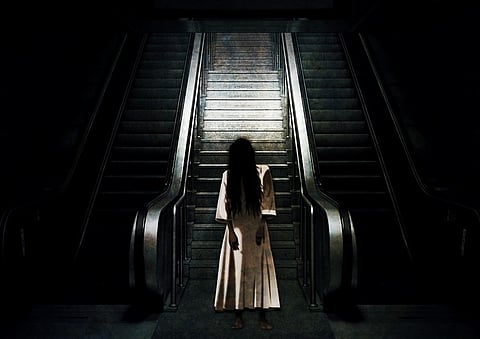

In Kochi, the term ghosts of the colonial past takes on a literal meaning. Your friendly neighbourhood ghost is likely to be of British, African or Malayali origin, depending on where you are in the set of islands that make up the older part of the coastal city.
Ghost sightings in Willingdon Island usually begin at the big banyan tree near the Embarkation ferry station, and gradually spread to the streets where the abandoned staff quarters of the Cochin Port Trust are located. People generally avoid going there after sunset.
“Since childhood, I’ve heard stories of how ‘foreign’ spirits of both men and women haunt the street. Many people have had many supernatural experiences while trying to go past the bungalow on the corner,” whispers 50-year old Chandran, the owner of a tea shop near Embarkation.
Story goes that a British woman died in the area, after being cheated by her live-in partner: “Some say, it is possible to hear a woman’s suppressed cry on the streets, especially on Fridays,” he smiles.

Abandoned houses in Willingdon Island
Take a boat from Willingdon to Mattaancheri, and the nationality of the ghost changes. Mattaancheri was once home to the ‘Kaappiris’ of Kochi, people of African origin enslaved by the Portuguese colonialists.
In his book ‘History of Fort Cochin’, historian KL Bernard records 17th century local lore about the Portuguese having hidden treasure hordes in niches carved into the robust walls of their houses.
The ‘kaafirs’ (unbelievers) as they called the enslaved people, were bound and pushed into the niches, forced to sit guard. They were to keep the treasures safe for the rightful heirs to come and claim. The niches were then sealed with mortar.
Bernard’s son Biju Bernard told The News Minute: “The slaves were subject to a lot of brutalities. Locals believe that their cries can be heard from within the old walls of Fort Kochi and Mattancherry areas, even centuries after their deaths.”

Biju Bernard
The shrine of one such shrine Kaappiri Muthappans, as they are now called, is at Mangattumukku in Mattaancheri, and people offer ‘puttu’ (a rice-dish native to Kerala).
“People consider them ‘good’ spirits who roam on the streets of Mattaancheri and Fort Kochi. Hence they offer them food and drink,” Biju
adds.

Kappiri Muthappan shrine
True to its cosmo-spirit, Kochi also offers the native variety of ghosts.
There is Vaduthala Mathai who haunts the Kochi rail track where the Perandoor canal passes through. Legend has it that Mathai was a rowdy who was hung to death at that very spot by the King for molesting a woman. After his death, it is believed that he spares no one who dares to cross the said area.
“In the earlier days, fishermen offered liquor to appease Mathai’s spirit. Some do so even now. As a child, I have heard many stories of his numerous apparitions to people, but I have no idea whether all that is true or not,” says 70-year old Rosamma Robert, a resident of the area.
Kochi’s ghost-realm is also gender-inclusive. There is a small shrine underneath a banyan tree that is dedicated to ‘Yakshikaavu’ near Thekkethalam at Mattancherry.

Yakshikaavu
“People dare not go through this lane late at night. Many claim to have seen a ‘yakshi’ (female spirit) near the tree. She was killed by someone and supposedly haunts the place to take revenge,” says Ganesh Jain, a local.

Unfortunately, it turns out that there was a taming of the shrew type of scene that occurred. Story goes that people who lived in the neighbourhood were perpetually troubled by the yakshi who would brutally slay them. It was only after Dharma Shaasta (a Hindu deity) put in a timely appearance as a small boy that the yakshi was trapped at Yakshikaavu.
That’s all folks!